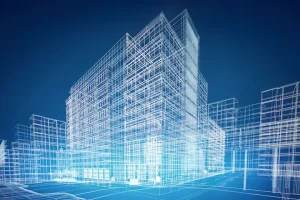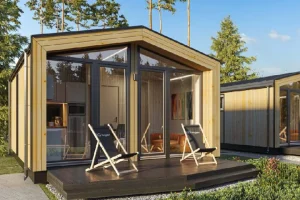Choosing the type of metal frame for any construction project is a critical step in the design and construction of a structure, which has a great impact on the costs, execution time, safety and durability of the structure. Metal frames are a very popular option in the construction industry due to their features such as high strength, earthquake resistance and flexibility in design. However, each type of metal frame has its own characteristics and applications and should be selected based on the needs of the project, environmental conditions and financial constraints. Today and in this article, we are going to introduce the types of metal frames. Stay with us.
Types of metal skeletons
1. Steel frame of industrial buildings
Metal frames are widely used in industrial buildings due to their special features, including speed of construction and lower costs. These types of frames are usually made of large metal profiles that can withstand heavy loads and complex forces. In these types of structures, steel is usually used as the main material to provide the necessary strength to withstand heavy loads. These frames are especially used in buildings such as factories, warehouses and workshops, because they require open and spacious spaces.
In industrial buildings, metal frames are usually designed as metal frames or trusses to withstand various loads, including dead, live and wind loads. Another advantage of metal frames in industrial buildings is the high speed of installation and implementation, which allows industrial projects to be put into operation quickly. In addition, the metal frame is resistant to fire and moisture and has a long lifespan, which is essential for industrial buildings.
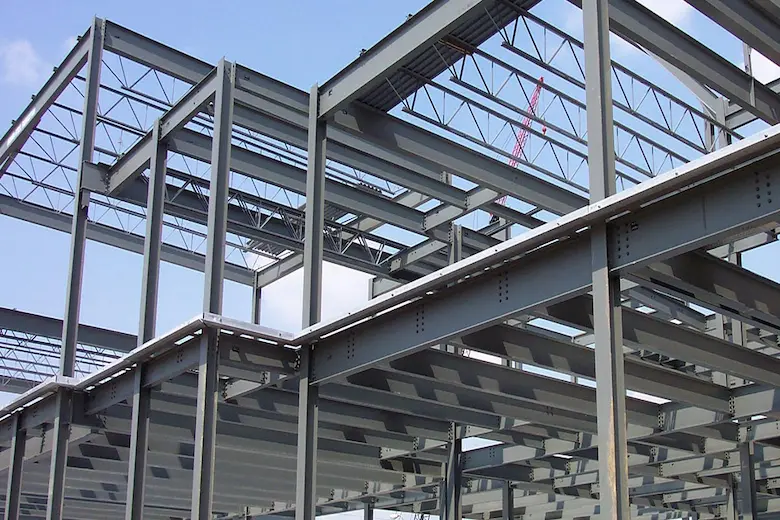
2. Metal frame of residential buildings
In residential buildings, metal frames are also widely used due to their characteristics such as strength and flexibility in design. The metal frame in this type of building usually consists of steel columns and metal beams that are connected to each other using bolted or welded connections. These frames are widely used for multi-story buildings, especially in earthquake-prone areas, because the high resistance of steel to earthquake forces increases the safety of the building.
One of the outstanding features of metal frames in residential buildings is the possibility of building large and open spaces. Because the metal frame can withstand heavy loads, the use of non-load-bearing walls in the interior design of the building is possible. This feature allows architects and designers to design the interior decoration of the building as they wish. Also, metal frames weigh less than concrete frames, which reduces transportation and installation costs.
3. Truss steel frame
Truss steel frame is one of the most widely used types of steel frame, consisting of triangular-shaped parts and usually used to cover large openings and large spaces. This type of frame is widely used in large buildings and towers, especially in areas with high snow loads. In the design of trusses, a combination of metal beams and triangular connections is used to create a stable and resistant structure. This type of steel frame is able to withstand heavy loads without the need for many columns and provides the interior of the building with free and unobstructed load-bearing space.
One of the significant advantages of the truss frame is its low weight and high strength. Due to its triangular design and uniform load distribution throughout the structure, this type of frame can easily absorb external pressures such as wind or earthquakes and show high resistance to these forces. Other advantages of a truss frame include low construction costs and high speed of implementation, as many prefabricated and ready-made truss parts are transported to the project site.
4. LSF (Light Steel Frame) steel frame
LSF (Light Steel Frame) is one of the new technologies in building construction that has become a popular option in construction projects in recent years due to its light weight and high flexibility. This type of frame is made up of thin steel profiles that are used as a network to create light and resistant structures. In the LSF system, cold-rolled profiles are used, which reduces the weight of the structure compared to heavy metal frames. These features have made the LSF metal frame a suitable option for residential, office and commercial buildings.
One of the great advantages of the LSF metal frame is its quick and easy installation. This system consists of prefabricated steel structures that are quickly installed at the project site. Also, due to the low weight of these structures, transportation and installation costs are also reduced. Other advantages of LSF metal frame include its resistance to earthquakes, fires, and various environmental conditions. This type of frame has a long lifespan due to the high resistance of steel to corrosion and environmental damage. It also provides architects with diverse and modern designs, which can optimally and efficiently arrange interior spaces.
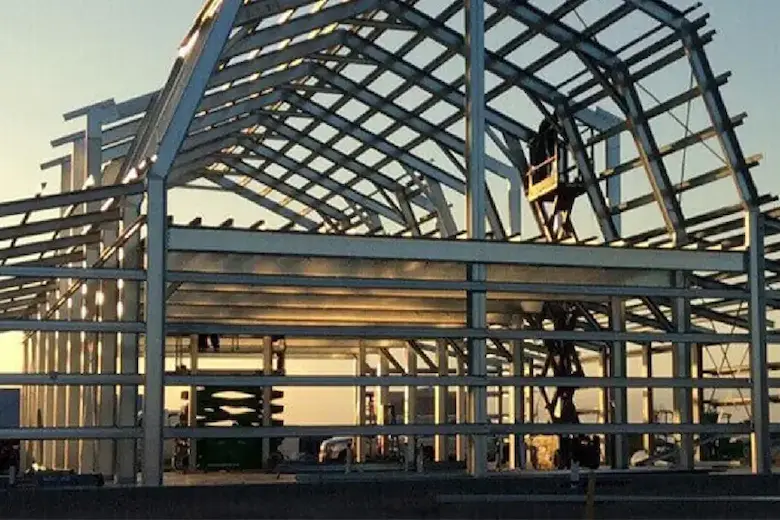
5. Bolted metal frame
Bolted metal framing is a modern connection system that is known for its ease and speed of installation. In this type of frame, metal parts are connected to each other using bolts and nuts instead of welding. This system is usually used in large projects, such as commercial and office buildings. One of the main advantages of bolted metal framing is that it is very easy to install and disassemble, and parts can be easily moved or replaced. This makes this type of frame very suitable for temporary projects or buildings that require changes in the future.
Bolted metal framing is faster in terms of execution time than welded frames because it does not require welding. Also, due to the use of bolts, the possibility of human error in the connection process is reduced, which increases the accuracy of the structure. Another important feature of this type of skeleton is the possibility of easy reconstruction and maintenance, because if needed, different parts of the structure can be changed or repaired simply by unscrewing the screws.
Key points in choosing types of metal frames
1. Type of project and use of the building
The type of project and the use of the building is one of the most important factors in choosing the type of metal frame. For example, in multi-story residential buildings, the use of a light steel frame or LSF is appropriate due to its high strength and flexibility, while in industrial projects and factories, a truss or heavy metal frame may be better due to the need to withstand heavy loads and large spaces. Choosing the right type of metal frame based on the needs of the project will optimize costs and construction time, and can also increase the performance of the structure over its lifetime.
2. Environmental conditions and resistance to natural factors
Environmental conditions and natural factors such as humidity, wind, rain, and temperature changes can have a great impact on the choice of metal frame type. In areas with high humidity or rainy weather, the use of stainless steel or corrosion-resistant coatings such as galvanized can be beneficial. Also, in earthquake-prone areas, steel frame metal frame or truss metal frame will be a better choice due to its high resistance to lateral forces and earthquake-induced vibrations. Paying attention to these factors can increase the durability and safety of the structure against various conditions.
3. Speed of project implementation
The speed of project implementation is one of the factors that has a great influence on the choice of the type of metal frame. If the project requires quick completion, choosing a bolted metal frame or LSF can be a good option, because the installation of these systems is faster than other types of frames. In this type of frame, due to the prefabricated parts and easy installation, the execution time is significantly reduced. For this reason, for projects with limited time and the need for quick delivery, using lightweight metal frames and bolts will be a good choice.
4. Project budget and costs
The project budget is an important factor in choosing the type of metal framing. Heavy metal framing, such as steel frame framing, typically costs more, but is more suitable for large, complex projects that require higher strength. On the other hand, lightweight metal framing, such as LSF systems or bolted framing, can be a more cost-effective option and is more suitable for projects with budget constraints. Making the right choice based on the project budget can avoid additional costs while still providing the required performance.
5. The need for flexibility in design
Flexibility in design is another key factor in choosing the type of metal frame. Lightweight and truss metal frames allow designers to design interior spaces without load-bearing walls or additional columns. This feature is very suitable for projects that require large and open spaces, such as sports halls, exhibition halls or commercial buildings. On the other hand, heavy steel frame metal frames are a good choice for tall buildings and projects with high load-bearing requirements due to their greater strength against heavy loads and lateral forces. The choice of frame type should be such that it facilitates the design of the building based on the functional and aesthetic needs of the project.
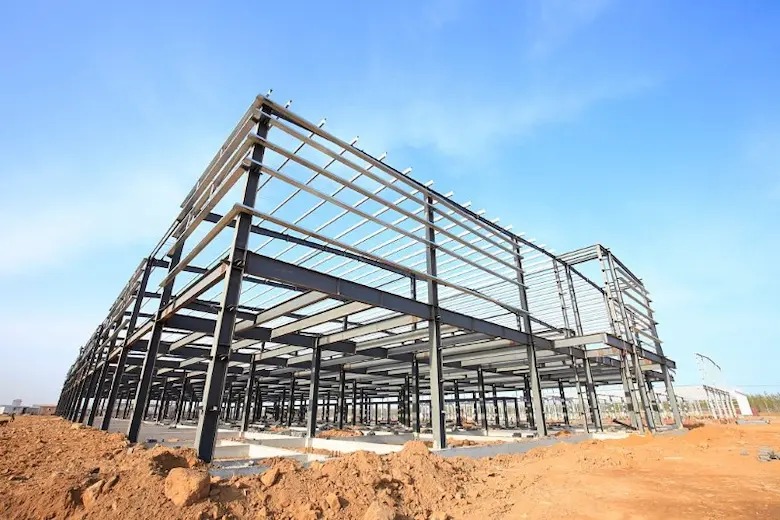
Final Words
As you can see, in this article, we have thoroughly introduced and reviewed the types of metal frames. We learned that the correct choice of the type of metal frame depends on a set of different factors such as the type of project, environmental conditions, speed of implementation, budget, and the need for flexibility in design. Paying attention to these points can have a significant impact on the performance, safety, and efficiency of the structure. Since each construction project has its own characteristics and needs, the type of metal frame must be selected carefully and consciously according to the project conditions. The right choice not only reduces costs but also increases the quality and lifespan of the structure, which will contribute to the ultimate success of the project. Thank you for your support until the end of this article.
Ohaddeco Group specializes in the design and implementation of LSF structures, various types of kit houses, and interior coatings such as wooden acoustic wall cladding and wooden thermowall. Dear friends, you can contact our experts through communication bridges to obtain more information and receive free advice.

